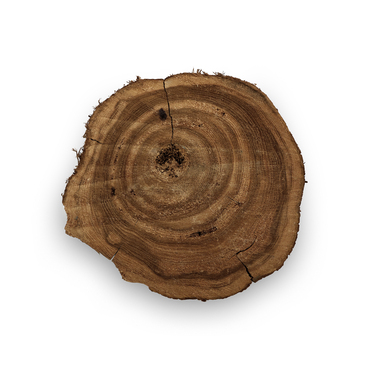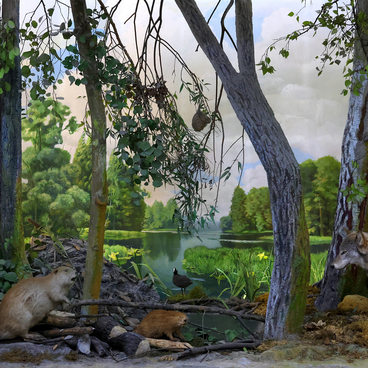The diorama “Mixed Forest” displayed in the museum shows a forest in early fall. The trees: birches, aspens and oaks have colorful leaves. The diorama is designed to remind that every tree in the forest is part of a fragile ecosystem. Scientists have calculated that one oak tree can provide living conditions for more than 300 species: moths, birds, squirrels and wild boars.
According to official data, there were about 1370 red deer in the region as of 2022. It is this animal, sometimes found on the edges of the mixed forests of the Kaliningrad region, that was chosen to be placed in the center of the diorama.
The Kaliningrad region is located in the zone of excessive moisture, and nurseries of rare species of trees and plants were created on its territory. One of them is the nursery of giant thuja on the Curonian Spit, in the depth of the tourist route “Royal Wood”. This unique place has been preserved since the times of “trials” of various tree species introduced from different countries. The plant brought from North America not only took root perfectly in the nursery, but also regularly produces germinating seeds, due to which it is perfectly spread by birds and animals to new territories.
The understory (i.e. self-seeding from already grown trees) nursery was part of the “Grenz” forestry, the oldest in East Prussia. It was founded as early as 1749 in the root section of the spit. The forestry occupied the territory from Kranz (now the town of Zelenogradsk) to Zarkau (now the village of Lesnoy). It was there that Queen Louise of Prussia, who fled from Napoleon in 1807, stayed overnight.
Large-scale experiments were conducted at the “Grenz” nursery to study the growth of various tree and shrub species in the conditions of the Curonian Spit. Plants capable of surviving in difficult conditions such as moving sand, salty sea wind, excessive radiation and lack of moisture were selected for the experiments. Over two centuries, experience in plant selection and the creation of self-regenerating forests was accumulated, providing the basis for combating the consequences of the “sand catastrophe”: deforestation of the Curonian Spit by the beginning of the 19th century had brought it to the brink of environmental disaster.
According to the data of
2021, forests occupy almost 19% of the Kaliningrad region. Within six years —
from 2016 to 2022 — it was possible to increase the territory covered with
forest vegetation from 281.4 to 283.7 thousand hectares. This is mainly mixed
forest: the border between European broad-leaved and coniferous taiga forests
runs through the territory of the region.


